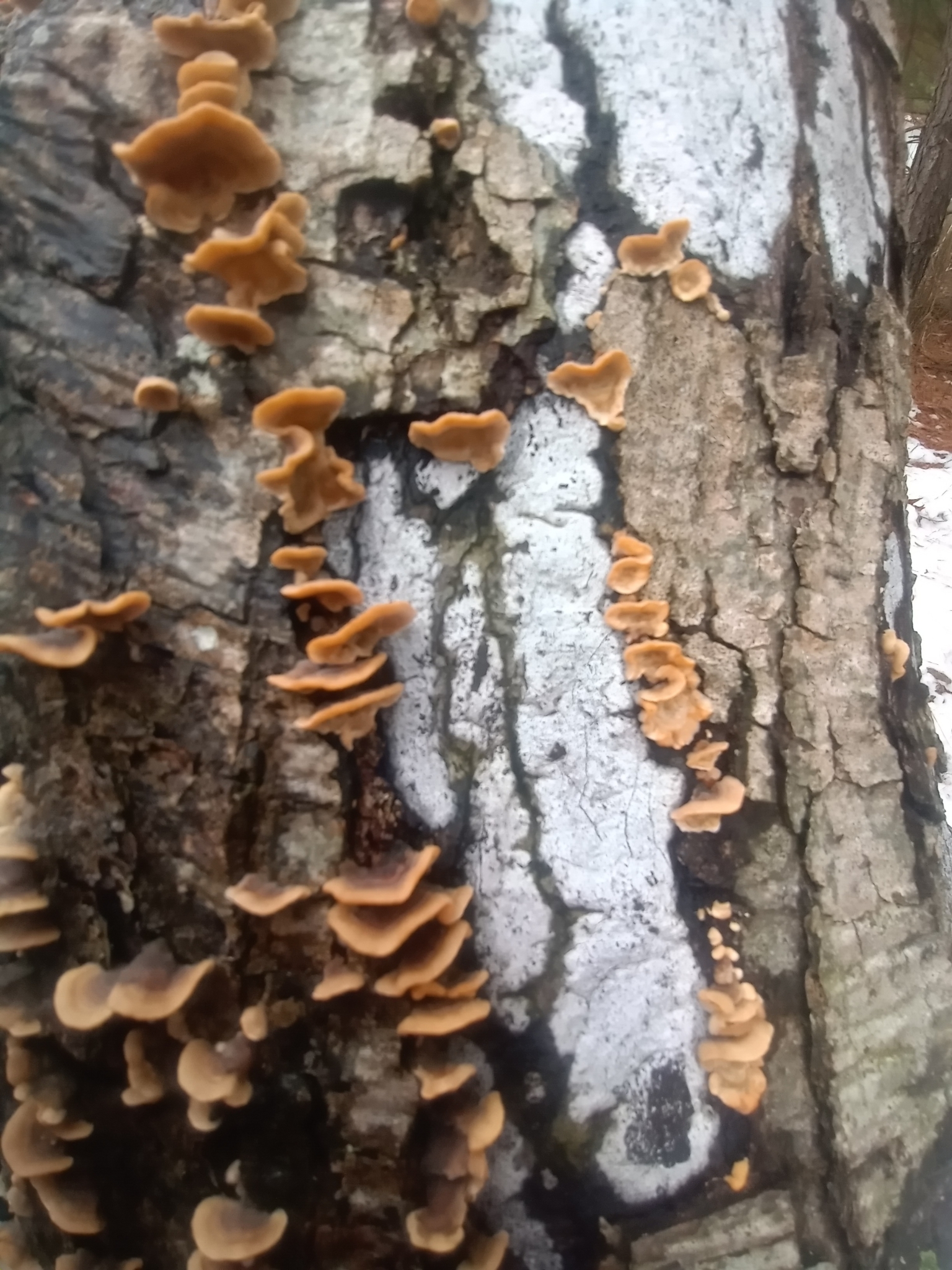Map Snapshot







17 Records
Seasonality Snapshot
Source: Wikipedia
| Stereum hirsutum | |
|---|---|

| |
| Scientific classification | |
| Domain: | Eukaryota |
| Kingdom: | Fungi |
| Division: | Basidiomycota |
| Class: | Agaricomycetes |
| Order: | Russulales |
| Family: | Stereaceae |
| Genus: | Stereum |
| Species: | S. hirsutum
|
| Binomial name | |
| Stereum hirsutum | |
| Synonyms | |
|
Helvella acaulis Pers. (1778) | |
| Stereum hirsutum | |
|---|---|
| Smooth hymenium | |
| Cap is offset or indistinct | |
| Hymenium is decurrent | |
| Lacks a stipe | |
| Spore print is white | |
| Ecology is saprotrophic or parasitic | |
| Edibility is inedible | |
Stereum hirsutum, commonly known as the false turkey tail,[1] hairy stereum,[2] or hairy curtain crust,[3] is a species of fungus and a plant pathogen that infects coniferous and deciduous trees.
Description
[edit]The fuzzy orangish fruiting bodies typically form in multiple brackets on dead wood. The cap is 1–5 centimetres (3⁄8–2 in) wide.[4] The flesh is thin and tough.[5] The spores and spore print are white.[4][5]
It is inedible.[4]
Similar species
[edit]Similar species include Stereum rameale, S. ostrea, and Trametes versicolor.[4][5]
Habitat and distribution
[edit]Its substrates include dead limbs and trunks of both hardwoods and conifers.[6]
It is found throughout North America.[5]
Ecology
[edit]It is a plant pathogen infecting peach trees. S. hirsutum is itself parasitised by species such as the fungus Tremella aurantia.[7][8]
References
[edit]- ^ Thomas J. Volk. 2016 |Tom Volk's Fungus of the Month for November 2000.
- ^ Arora, David (1986). Mushrooms demystified: a comprehensive guide to the fleshy fungi (Second ed.). Berkeley: Ten Speed Press. ISBN 978-0-89815-169-5.
- ^ Grass, Josephine; Pabst, Martin; Kolarich, Daniel; Pöltl, Gerald; Léonard, Renaud; Brecker, Lothar; Altmann, Friedrich (25 February 2011). "Discovery and Structural Characterization of Fucosylated Oligomannosidic -Glycans in Mushrooms". Journal of Biological Chemistry. 286 (8): 5977–5984. doi:10.1074/jbc.M110.191304. PMC 3057827. PMID 21169363.
- ^ a b c d Davis, R. Michael; Sommer, Robert; Menge, John A. (2012). Field Guide to Mushrooms of Western North America. Berkeley: University of California Press. pp. 311–312. ISBN 978-0-520-95360-4. OCLC 797915861.
- ^ a b c d Audubon (2023). Mushrooms of North America. Knopf. p. 166. ISBN 978-0-593-31998-7.
- ^ USDA. 2009 USDA Fungal Database: Stereum hirsutum database[permanent dead link]
- ^ C. Michael Hogan.Witch's Butter: Tremella mesenterica, GlobalTwitcher.com, ed; N. Stromberg Archived 2012-09-21 at the Wayback Machine 2009
- ^ Species Fungorum. 2009. Synonymy: Stereum hirsutum
External links
[edit] Media related to Stereum hirsutum at Wikimedia Commons
Media related to Stereum hirsutum at Wikimedia Commons


